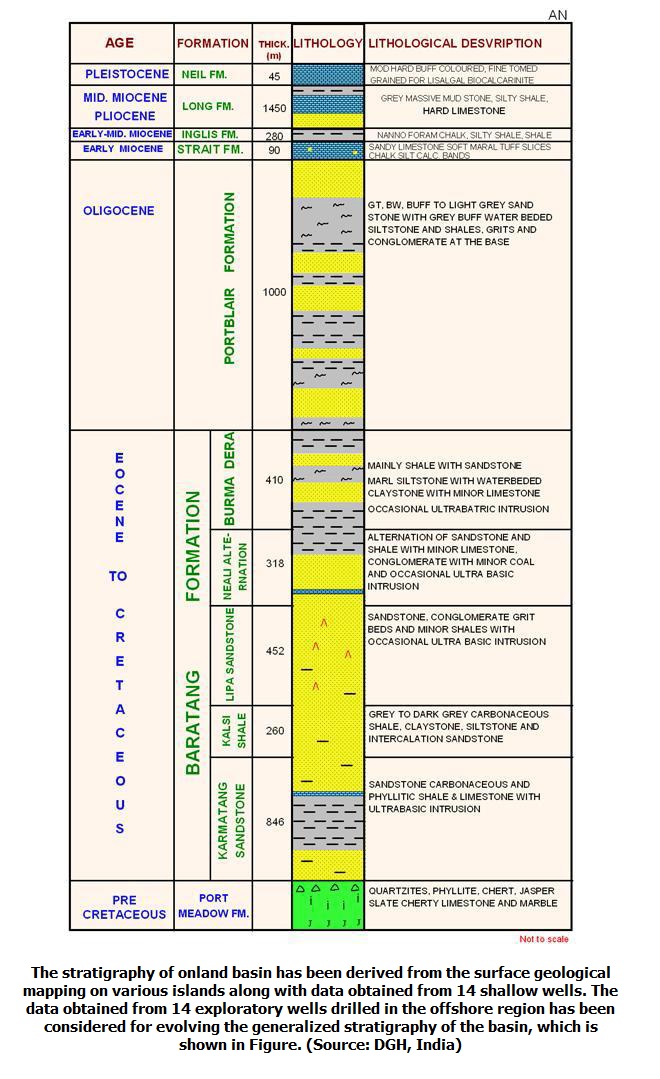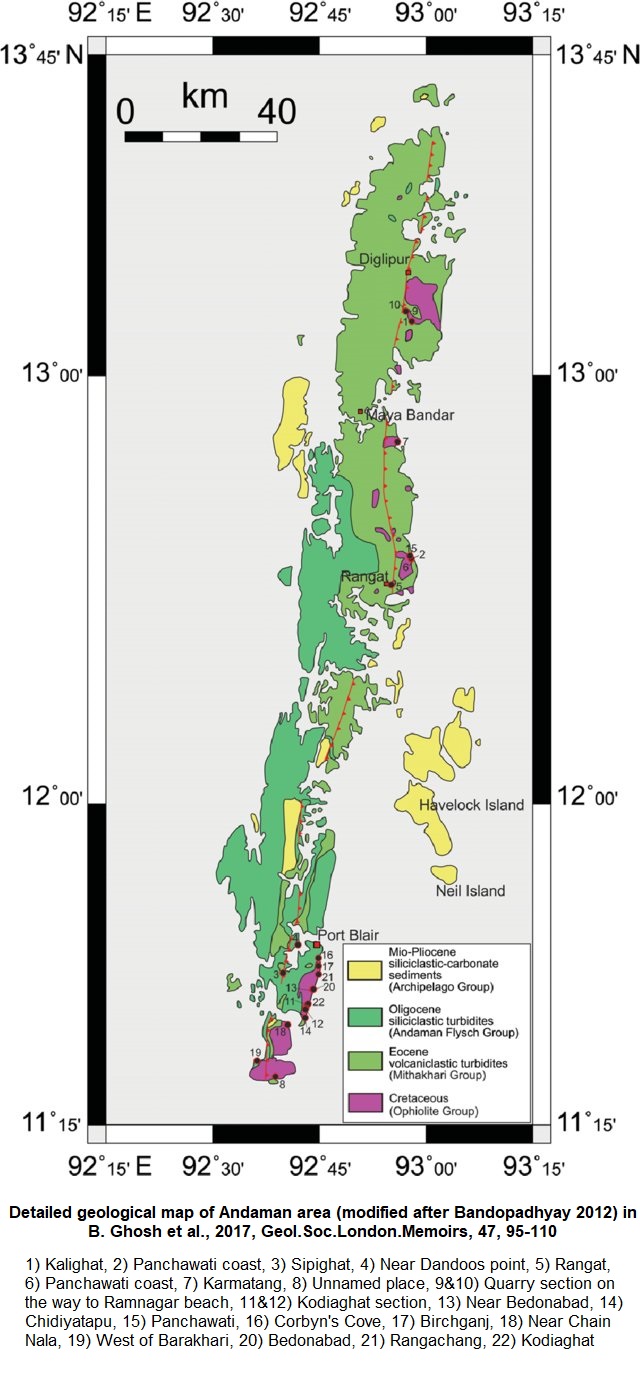Port Meadow Fm
Type Locality and Naming
Named after Port Meadow Island. The oldest exposed rocks in Andamans were first named by Tipper (1911) as ‘Older Sedimentaries’ and considered as Pre-Cenozoic in age. Later, Gee (1927), included them in ‘Serpentine Series’. Anand (1960) included a part of ‘Older Sedimentaries’ into Baratangs. Chandra et al., (1961) used the term ‘Older sedimentaries’ for those sediments which are older than the Baratang. Srivastava et al., (1974) proposed the name Port Meadow Group after the Port Meadow Island, south of Middle Andaman, where Chandra et al., (1962) encountered the best exposure. This ‘Group’ was further divided into ‘Port Meadow Formation’. Following the Code of Stratigraphic nomenclature, the term Port Meadow Formation has been retained in the work of Pandey et al., (1993) (Pandey and Dave, 1998). The hypostratotype is Porlob Island, Middle Andaman.
[Original Publication: Shrivastava, J.P., Bansal, S.S. and Gadkari, S.D., 1974 Geology of part of Middle Andaman field season 1973-74. ONGC, Directorate of Geology.].
Lithology and Thickness
Chert to Conglomerate. In the holostratotype, the rocks constituting this unit are light gray to pale brown, bedded cherts grading into red jasper, crystalline dolomite or serpentine marble, medium to fine grained, gray quartzite and phyllite. The rocks, except the quarzite, show good foliation. They are however, traversed by quartz and calcite veins (Chandra et al., 1961). In the hypostratotype, Porlob Island, the formation consists of porcellaneous limestones, cherts, jaspers and quartzite. At places the argillaceous rocks in contact with ultrabasics have given rise to phyllites. On weathering these rocks have given rise to bright red lateritic soil that characterize the Porlob Island (Srinivasan,1986).
The conglomerates occurring in the lower part of the formation are well consolidated and contain rounded to subrounded pebbles of ultrabasics, shales, quartzites, jasper and sandstone. In some places the conglomerates are shelly. The conglomerates are more developed in the northern part of Middle Andaman and grade into grit or sandstone. The sandstones occur above the conglomerates and are infrequently interbedded with shales and calcareous sandstone. At places they are bedded depending upon mica content. They are highly jointed, hard to friable. The sandstones show variation in color depending upon iron content. The calcareous sandstones show honey comb weathering due to irregularly distributed cementing material. The shales are laminated and have mud to silt size grains, are usually bluish grey in color, although light greenish to grey types are also seen. In the Middle Andaman, Bakultala-Saguanala syncline, a thickness of Port Blair was estimated to be 108m by Shrivastava et al., (1974) where a major part of the sequence is eroded away. Port Blair Formation is better developed in Kadamtala area and a thickness of 1315m was recorded by Shrivastava e al., (1973) in this area.
[Figure 1: Generalized Subsurface Stratigraphy of Andaman-Nicobar Basin (from dghindia.gov.in)]
Relationships and Distribution
Lower contact
The base and top of the Port Meadow Formation are not exposed. Chandra et al. (1961) reported an unconformable relationship between the Port Meadow Fm and the overlying Baratang Fm.
Upper contact
Regional extent
Besides, south Andaman and in areas around Port Blair, the formation is also widely recorded from Middle Andamans and Baratang Island. It has also been recorded from the Northern most Cape Topham in Long Island (Srinivasan and Dave, 1982) (Pandey and Dave, 1998).
[Figure 2: General Stratigraphic Correlation of Burma, Andaman and North Sumatra (from dghindia.gov.in)]
[Figure 3: Detailed geological map of Andaman area (modified after Bandopadhyay 2012) showing locations mentioned in numbers in B. Ghosh et al., 2017, Geo.Soc.London.Memoirs, 47, 95-110)]
GeoJSON
Fossils
Jacob (1954) reported radiolaria including Spumellani and Nasgelaria from the cherts.
Age
Depositional setting
The radiolaria-bearing cherts and jasper seem to have been deposited in deep marine, acidic environment. The association of radiolaria bearing cherts with ophiolites (ultra-basic) in Cuth Bert Bay is also reported by Aubouin (1965), which according to him are characteristic of geosynclinal chains, particularly of eugeosynclines
Additional Information


